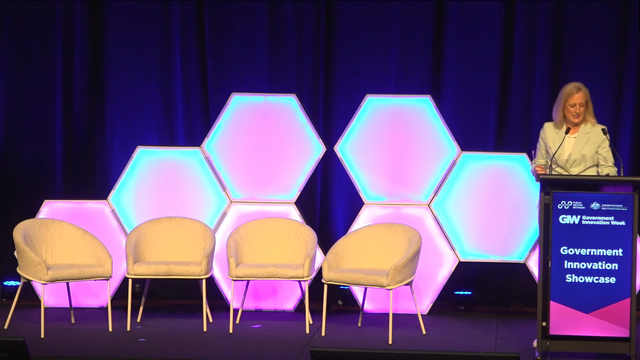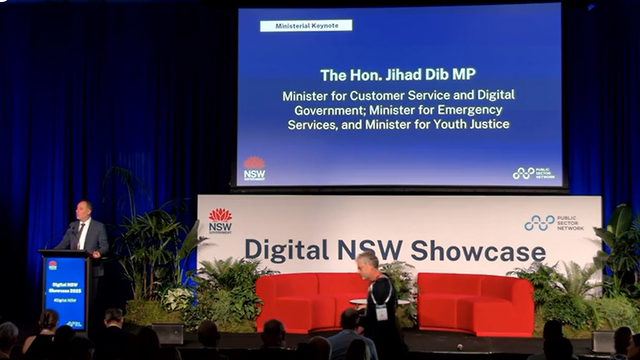Part of the Local Government Community National Insights Series
Improving Local Government Services
Local governments are known to provide the most direct services to their customers. They provide services like roads, rates and rubbish, but in the 21 st century, they also do so much more. From mental health and wellbeing services, to housing and property provisions; from drug and alcohol addiction treatments, to actions at the forefront of climate change and sustainability, and so much more. But it is becoming increasingly more difficult to do all this without appropriate data. At least that was the conclusion of the City of Stonnington in Melbourne’s inner east. Greg Curcio , the Chief of Customer and Transformation, says that it was data that was able to drive their “holistic transformation.”
The role of any local government is to provide services to their citizens, and local governments are particularly adept at that because “we are the closest government entity to the community; we deal with our residents on a day-to-day basis.” The City of Stonnington has “over 115,000 residents and many visitors coming to our famous streets and shopping districts.” As such, they have “over 100 different services and the equivalent of 34 separate small businesses,” all under the banner of one entity. However, until they started this transformation journey “three or so years ago,” most of these areas didn’t have the “right connectedness across our systems, processes and data.” A customer therefore would have to “interact with us in different ways based on our own processes, not by their choice.” From a customer’s perspective, this was cumbersome, complicated and unnecessary, especially given that ultimately it is all the one entity.
A Focus on Data
So the transformation journey began to essentially alleviate the siloes and the congestion. “We could have simply invested in new systems and processes, but that alone wouldn’t have necessarily dealt with the customer’s experience. We needed to make some gains beforehand.” It very quickly transpired that those gains needed to be in “fixing the basics and driving insights through data.” However, this was not going to be easy because there was also “an incredible amount of technology debt and legacy systems.” This was something that had to be dealt with and there were no easy fixes. “It simply comes down to the level of risk you’re willing to take.” One of the first things they did was “to provide laptops for our people (before the pandemic) and standard operating environments. Without that, we couldn’t really focus properly on the customers.” Then they moved onto data, which was the main focus. Data became a crucial component of the transformation journey because “it unlocks many things along the way.”
“We invested in data at the beginning of our transformation program because we treat data as an asset, much like a building or a service. It’s actually one of the most important assets we have.”
Greg Curcio, Chief, Customer and Transformation, City of Stonnington (VIC)
To deal with legacy debt and to ensure the centrality of the data, they developed a “five stage process of data enablement to increase customer and employee trust within Stonnington.” Whilst the stages were all technical, the process was quite simple. It was about “about improving the level of trust we have with our residents, because trust amongst government and media institutions is waning, but local government can fill the gap.” This meant being open and transparent, but also asking residents to assist by filling out more surveys and providing more feedback. Stonnington had plenty of data, but most of it “was locked away in legacy systems and we didn’t the capacity to access it or work on that issue.” Through this enhanced engagement and some minimal engagement with the legacy systems, they now have “an up-to-date customer register,” and they have been able to “deliver a better customer experience by removing some of the roadblocks.” By focussing on data and customer engagement at the start of the process and without changing systems, that has “actually set us up for faster and more constant change for customers to improve their experience.”
A New Approach
However, in order to focus on data, the whole council had to take a new approach. “Our executives, councillors and all our employees had to be on board.” All of them had to learn new terms, like ‘data stack’ and ‘cloud data tooling’, but more importantly, they had to learn about “data science and was it even realistic to talk about such a thing at a local government level?” In the end obviously it was realistic, and in fact, with cost of such capabilities coming down, “we would have been negligent to not consider them.” Then once they were considered, part of the task was about “dispelling fear. Our staff needed to learn the vocab and to relate to common problems.”
Council then partnered with “Data Metrix, our delivery partner, who supercharged the program.” There is now federated curated data in the data stack, “and we’re injecting a lot of unstructured data into our platform, curating it and then sending it back out to the applications.” The key to all this is that once “we started going through the process, we were able to unlock much of the data and deliver some key reporting and insights.” For instance, they now know how many requests they receive across the board, and “how long it takes our customers to get a resolved customer request.” Previously, some of this data was kept in an Excel sheet that was not regularly updated. They can also now “provide some fancy Power BI reports to further leverage that information and to drive improvements.”
The real benefit of having useful data is that it has allowed Council to “focus on specific systems that need updating, but also to deal with those systems that aren’t going to be upgraded soon. We can nonetheless still access some of that data.” For instance, if a critical service or council asset needed to be fixed in the past, “it would have included many inefficiencies, including handwritten notes, the transfer of those notes into another computer, reviewing those notes, double handling the information, and oftentimes, providing poor customer experience.” Now it is a much more seamless process where the data is only handled once and then it automatically goes to the right place for the work to be done. This means “we are much more agile and can interact with the data in the field at low cost.” Many field workers now even have iPads, though initially everyone wondered why they need them. Now with the iPad in front of them, “they will be far more productive, will do more with what they have, and will respond to those requests faster.”
For all staff, the data is accessible anywhere and it is much more secure, but this process hasn’t come without some “unintended consequences.” For instance, the data stacks come with easy-to-use and visually appealing dashboards. As such, for the first time, “executives can easily locate where any bottlenecks are,” both in terms of quantity of work and customer requests. All staff have access to the high level dashboards and as such, “it’s created a bit of a sense of urgency; our teams clean up their own backyards.” In fact, across the whole council, “this project has ensured that people take more ownership around the customer experience.” Of all possible unintended consequences, they don’t come better than that.
Featured Speaker:
- Greg Curcio, Chief, Customer and Transformation, City of Stonnington (VIC)


































